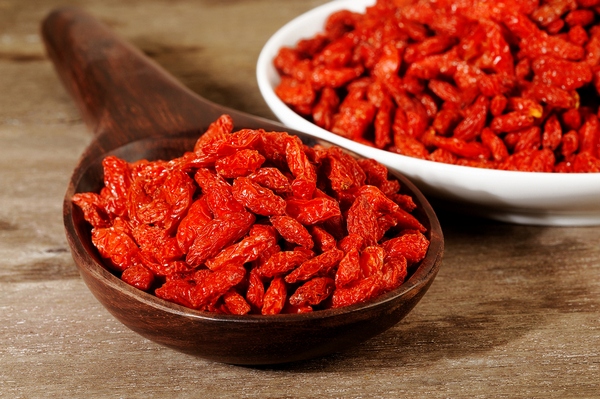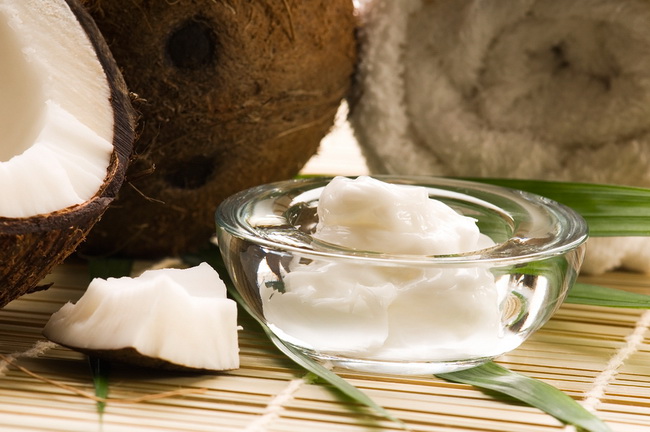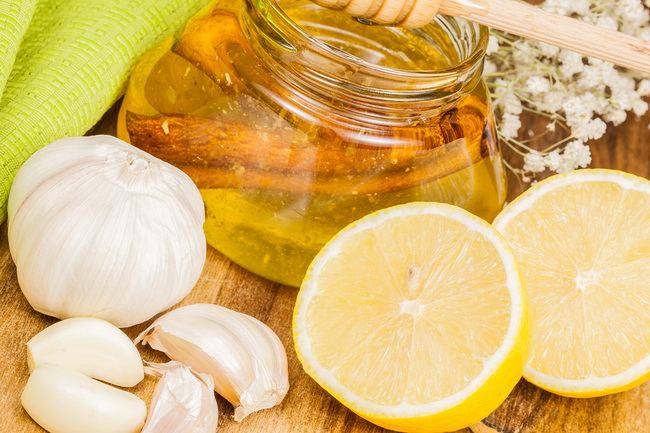- Make It Yourself Lavender Heart-Shaped Bath Bombs!
- 20 Things You Never Knew About “Down There”
- 12 Best Foods For Those Suffering From Arthritis Pain
- 12 Personal Hygiene Mistakes Almost Everyone Makes (Mom Never Told You About #4!)
- 15 Medicinal Plants And Herbs From The Cherokee People
- 12 Mind-Blowing Benefits Of Drinking Coconut Water During Pregnancy
- 12 Outstanding Winter Foods That Won’t Fatten You Up Like A Christmas Turkey
15 Super Foods And Other Ways To Improve Circulation (#8 Is Simply Amazing!)

Photo credit: bigstock.com
Good blood circulation is more important than many people realize. It is only through our circulation that oxygen, nutrients, and minerals get delivered to all different body parts. Our body must have good circulation for proper organ function and cell growth as well as cell regeneration.
Poor circulation can affect our liver, kidneys, heart, and brain. Typical symptoms of bad circulation are dizziness, confusion, headaches, hair loss, dry skin and edema, pain in the legs, irregular heartbeat, tingling feelings, or numbness in the extremities, plus cold hands or feet.
There are many factors influencing poor circulation, including smoking, excessive levels of caffeine, alcohol consumption, poor eating habits, and a sedentary lifestyle.
Sometimes it is a temporary problem, such as pregnancy or food allergies, but other times poor circulation is a result of medical problems such as diabetes, thyroid disorders, hypertension, nerve problems, narrowed blood vessels, and obesity.
One of the good things about circulation is that, for most people, it can be improved with just a few changes or additions to your life.
Keep reading! We have 15 amazing ways to fix circulation problems in a jiffy!
1. Massage
Regular massage is for much more than just feeling good and relaxing sore muscles — massage can help move blood into congested areas. A full body massage will widen the blood vessels, improving the flow. You can get a professional massage or have a partner warm up some almond, coconut, or olive oil and massage the body, always massaging upwards, towards the heart. Repeat two or more times a week for best results.
2. Hydrotherapy
Wow. Is there anything sweeter than sitting in a Jacuzzi or hot tub and telling everyone that it’s for a medical reason? You aren’t being lazy; you are engaging in a healthy activity, friends! Improve your circulation by enjoying a sauna, steam bath, Jacuzzi, hot tub, or even just a hot bath three times each week. Hot water will dilate the blood vessels and encourage blood flow.
3. Regular Exercise
It must be said that exercise is the easiest way to promote good blood circulation. You don’t need to run a marathon to get the benefits of exercise; just simple mild aerobic exercise, such as walking, will improve blood circulation. Try getting 30 minutes of exercise five days a week for best results. Everyone is busy, but everyone can find three 10 minute bits of time to do a little walking, biking, or even just climbing the stairs a few times.
Continue to Page 2

Photo credit: bigstock.com
4. Watermelon
Rich in lycopene, watermelons are loaded with healthy antioxidants that have been shown in numerous studies to improve blood circulation. Lycopene is a natural pigment which gives food their red color. You can also get more lycopene in apricots, tomatoes, and pink grapefruit.
5. Goji Berries
These little berries, which resemble reddish raisins, can be found in almost all natural health food stores. These high fiber fruits are high in fiber and antioxidants, which will not only improve the circulation but boost your immune system as well.
6. Turmeric
It is the super anti-inflammatory spice that appears to be good for just about everything! The active ingredient in turmeric, called curcumin, protects from blood clots formation and decreases plaque buildup in the arteries. This will improve blood flow throughout the body. One 2012 study done published in the journal Nutrition Research, found that turmeric supplements had a positive effect on circulation, very similar to that found when exercising. Of course, turmeric should not replace exercise, but it is a terrific addition to any healthy diet and exercise routine! Add one tablespoon of turmeric to a glass of milk and drink once a day for best results. If you wish to take a supplement, speak with your doctor about the correct dosage for your situation.
Continue to Page 3

Photo credit: bigstock.com
7. Ginkgo Biloba
This is one of the oldest surviving tree species on the planet. The use of ginkgo biloba for dilating blood vessels goes back thousands of years. This herb is well-known for improving blood flow, which will give increased energy, improved organ function, as well as improve cognitive function since it will improve blood flow to the brain.
8. Cayenne Pepper
Capsaicin, the active ingredient in cayenne pepper, stimulates blood circulation. It also is known to strengthen the capillaries and arteries in the body. Using cayenne pepper can help to reduce many of the poor circulation symptoms, such as cold feet, headaches, and aching feelings in the legs. Mix half of a teaspoon of cayenne pepper powder with one tablespoon of blackstrap molasses in a glass of water and drink once or twice each day. Pregnant or breastfeeding women should avoid cayenne pepper.
9. Sunflower Seeds
Here is a tasty treat to get your blood moving! Sunflower seeds are rich in vitamin E, which helps to stop blood clots from forming. Other foods that are also high in vitamin E are nuts, olives, and pumpkin seeds. Eat an ounce each day for best result.
Continue to Page 4

Photo credit: bigstock
10. Coconut Oil
The healthy fats and medium chain triglycerides can help to prevent inflammation in the blood vessels, which will improve blood flow throughout the body. Use coconut oil as a massage oil and consume two to three tablespoons of extra virgin olive oil for best results.
11. Citrus Fruits
Oranges and other fruits high in vitamin C, such as grapefruit, lemons, and red bell pepper, are a great way to improve blood circulation. Vitamin C is a natural blood thinner that strengthens the capillary walls. Vitamin C also prevents plaque from building up in the arteries. By preventing plaque from forming and thinning the blood, you can eat your way to better circulation by enjoying fruits and vegetables high in vitamin C. Of course, you could take a supplement, but it is best to get your vitamin C from natural sources.
12. Green Tea
Green tea differs from other types of tea in that it is rich in powerful antioxidants which improve the circulation by relaxing the arteries. Green tea increases the nitric oxide levels in the blood, which widen the blood vessels, increasing the flow of blood. Drink two or three cups of freshly brewed green tea each day for best results.
Continue to Page 5

Photo credit: bigstock.com
13. Garlic
Garlic has been well-studied and has been found to lower blood pressure levels and prevent blood platelet aggregation, which will encourage circulation. The Journal of Nutrition published a 2006 study finding that garlic is terrific for overall cardiovascular health. Try eating two or three slightly crushed cloves of garlic each day or add more chopped, raw garlic to your salads, soups, and other meals.
14. Dark Chocolate
The Journal of the American Heart Association published a study in 2014 finding that dark chocolate improved blood flow to the legs by prompting the arteries to open wider, allowing for better circulation. It’s the cocoa in dark chocolate that has this powerful effect. Choose a dark chocolate that has a minimum of 70 percent cocoa and eat no more than 1.5 ounces each day. Dark chocolate tastes great, but it is high in calories.
SEE ALSO: Danger Signs You Have Poor Circulation and How to Fix It Naturally
15. Ginger
This common kitchen spice contains powerful ingredients such as zingerone and gingerols which have a warming effect on the body. That warmth you feel after eating or drinking ginger is the improved blood circulation. Regular consumption of ginger has been shown to reduce the risk of atherosclerosis, heart disease, and blood clots. Drink fresh ginger tea two or more times each day or, if you really love the taste, chew on some fresh ginger slices throughout the day. You can take a ginger supplement, but only after speaking to your doctor about the right dosage for you.
Extra Tips:
- Do not stay (whether it is sitting or standing) in any one position for too long. Take breaks every 30 minutes and move your body or at least change position.
- Acupuncture can also help to improve circulation
- Limit your consumption of alcohol and caffeine
- Stop smoking
- Put the limit to your daily salt intake
- Ask your doctor if taking omega-3 supplements would be of benefit to you
- Raise your arms and legs for a few minutes each day
- Drink lots of water each day
- Practice dry-skin brushing to improve blood circulation to the skin
There are so many benefits to improved blood circulation. Why not try one or more of the above suggestions and feel the benefits of good circulation?
References:
































